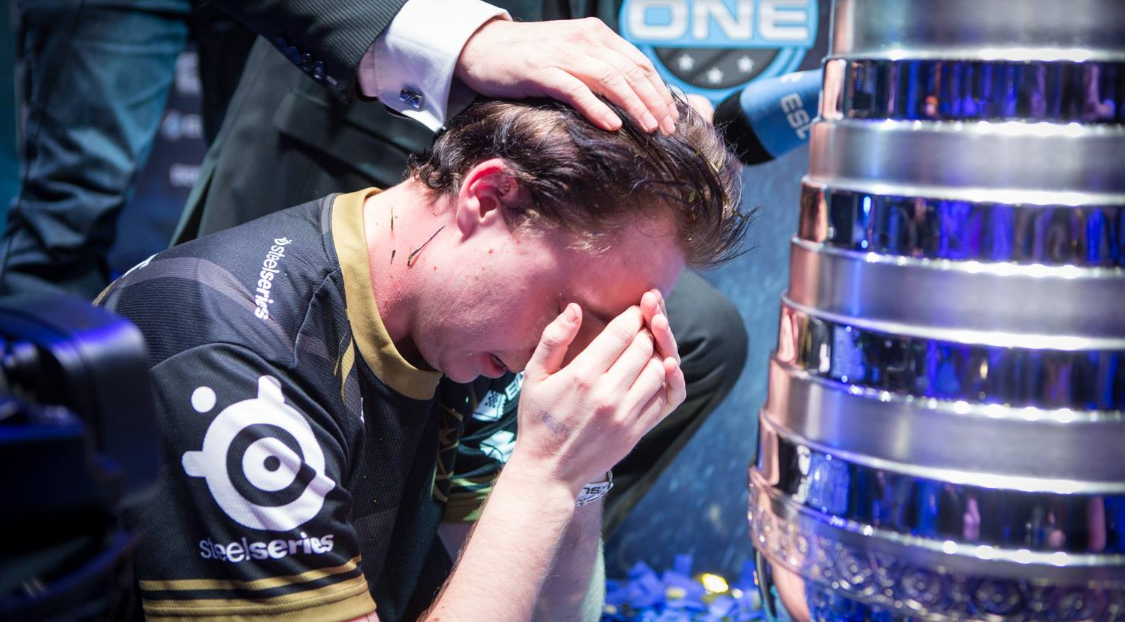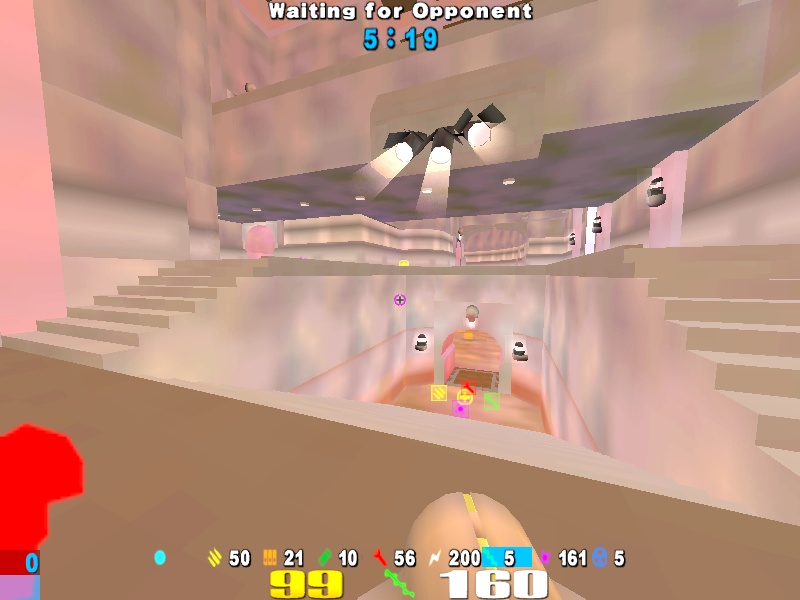Shooters are more sport than games

Christopher GeT_RiGhT Alesund with his champion cup for winning ESL One (first place prize: $ 100,000 for a team of 5 people), CS: GO discipline, 2014
The development of the Internet and the accompanying globalization left an indelible imprint on the gaming industry: single player-games have sunk into oblivion and gaming, as such, has gone online. Any little bit self-respecting project has a network gameplay (if we are talking about PC gaming, and not about the console game, where the storyings are still strong), and some titles got rid of the “load of the past” as a single campaign and offer exclusively network mode.
Too simple in single mode, too complex in network mode.
The gameplay of shooters has evolved over the last about twenty-five years and from the underground culture of a few geeks who have personal computers and are willing to put up with “incomprehensible cubes on the screen” has turned into a near-cinematic entertainment industry with a multimillion army of fans around the world. And if the geeks were ready to spend hours on end trying to go through DOOM II at the “nightmare” shying away from each pixel, then the modern average gamer is no longer ready for such challenges: he wants to rest after working in the office / school and have fun for $ 29-69. The average gamer wants beautiful pictures and dynamic gameplay and is no longer able to press the save button every ten seconds or try to go through the "Pavlov House" for a month.

That same "Pavlov House" in the original Call Of Duty. Almost half an hour of defense on the complexity of "Veteran" became the prototype of all the circles of hell on earth for many gamers
')
The strongest rendering occurred in the last 5-6 years. Now, some, wiping away mean tears, may recall helicopter battles in Battlefield 2 and look at his negligent descendants in the face of BF4 and BF Hardline, but not everything is as bad as it seemed.
Although the single gameplay is a thing of the past, the most important thing that remains is the essence of human nature - the competitive spirit.
The ubiquitous broadband access to the network has allowed millions of people to play with each other through the Internet, which has breathed life into the zero command shooters: Quake III Arena and Counter-Strike.
The trend was outlined in zero
In fact, the Internet has not killed hardcore gaming, it’s just a redistribution of roles: if earlier only the most “tough” people were playing online, now everything is there. And the games began to make their own for each category of players.
The forerunner of all this can be called Quake III Arena, which, by the way, is very much alive in its online reincarnation Quake Live.
An endless stream of adrenaline, the reaction to the limit, twisting the settings to zero to reduce the load on the eyes and reduce the number of distracting factors. Some craftsmen through the console even fit into a 180-degree review of the monitor image with an overview of 270-300 degrees. They grew their eyes on the back of the head, in short. And all for the sake of one goal - to win.

Unpresentable, yes?
With the arrival in almost every home of the Internet to win or, at least, to try to win it became possible without leaving home.
Sports component
DICE marketers and other guys from all sorts of Activision say like a mantra that everyone and everything only needs two things: grafon and fun. Console regeneration, rolls, shelters and huge maps are fun, but, as practice shows, it really captures the spirit of people against virtuoso confrontation, and a virtuoso game is possible only if there are strictly stipulated and unchanged rules from year to year. Thus, Quake Live and the Counter-Strike lineup have practically not been changing globally over the years, and the last representative of the counter-strike series, CS: GO, also assembles stadiums.

Tournament ESL One, discipline CS: GO, 2015
Attempt to redistribute the market
Someone orienting earlier, someone later, but the fact is: in the past few years, various disciplines have been trying to “grab a piece of the pie” of eSports on this or other pretext. And if you shake the reign of League Of Legends and Dota 2 in the MOBA category, it’s not possible, then there is only one “king” in shooters - CS: GO. So the Call Of Duty competition appeared, and recently a slow, but self-confident Blizzard made its move with its

Not without fan-service female characters in tight latex costumes, yes. But what a space for cosplayers at exhibitions!
By the way, it's hard to believe that
Prospects and Diseases of the Industry
Cybersport, in parallel with streaming services, is developing by leaps and bounds, and even skeptics have to admit that this phenomenon is not just a mainstream passing hobby, but a fully formed layer of modern culture that will remain with us for a long time.
But along with the growing popularity of eSports in the world, all the “diseases” of big sports come to it.
The first is contractual matches, which, in other matters, are mercilessly punishable by disqualification for a period of one year to life, both for individual participants and the entire team, if the collusion has been proven.
The second is the lack of personnel, for example, in CS: GO, which is worth talking about separately.
Modern eSports shooters, especially the “king” -CS: GO, feel a serious shortage of skilled players. Unlike MOBA, in which new "stars" appear with enviable regularity and whose age, sometimes, is only 16-18 years old, almost all champions in the disciplining disciplines are experienced veterans of the scene. The average age of the players of the top world teams has already crossed the mark of 25 years , which is considered “old age” for eSports.
Unfortunately, or fortunately, how to look at it, eSports shooters are not only shooting, but also tactical and strategic interaction, “mind games”. In this regard, experienced age players still have no equal, because they have already seen a lot and it is difficult to surprise them. Also a significant role is played by the “moral” component and the morale of the team, and many young players cannot boast with steel, hardened nerves.
The third is professional injuries and impaired health.
Many teams train 10-14 hours a day to keep fit. This results in injuries to the hands (inflammation of the joints and tendons from constant exertion), back problems and vision problems.
It would seem that all this can be solved by training the younger generation, but professional e-sports is still an extremely closed structure and you can get into the big leagues rather through an acquaintance than purposefully. Either one of the existing players will notice you not game servers, the probability of which tends to zero, although there were precedents.
Shooters push forward progress
None of the games has such high requirements for pinging, image transfer and accuracy of interpretation of mouse movements, as in shooters, especially in cyber sports.
Even at the amateur level, the difference in 50 ms of ping is palpable (and a ping above 80-90 ms is not very playable in CS: GO at high ranks), there are high demands on the frame refresh rate, color reproduction and even on headphones, because clear sound can give a split second advantage that will be decisive.
Unfortunately, there were no “parasites” in the form of “gaming” keyboards with bells and whistles, or RAT mice having a weight of about 120-150 grams (which is a formal mockery of the wrist and forearm), but in general, we owe the shooters to mass mice, high-precision sensor, robust mechanical keyboards and headsets with high-quality microphones and sound at more or less affordable prices.
Instead of output
The Internet has changed the face of a shooter, turning almost every one of them from a fun corridor "adventure" into an online "rubilovo", which kindles the excitement and desire to win in people.
Source: https://habr.com/ru/post/372229/
All Articles